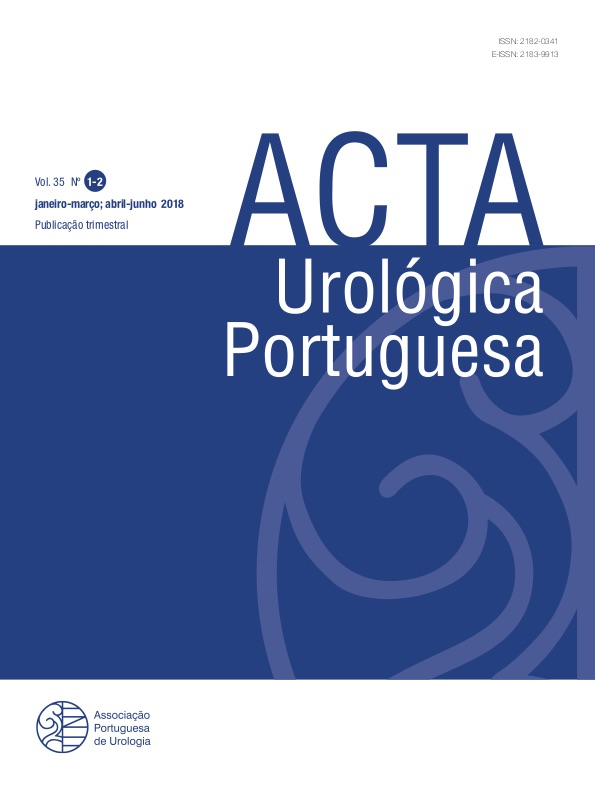Multiple Renal Arteries in Kidney Transplantation: Is it a Problem Nowadays?
DOI:
https://doi.org/10.24915/aup.35.1-2.82Keywords:
Kidney Transplantation, Renal Artery/abnormalitiesAbstract
Introduction: Shortage of high quality donors led to an increasing need of compatible organs: grafts with multiple renal arteries (MRA) are one of the solutions, although being a potential risk factor that can impair outcomes. The aim of this study is to provide a view of our experience with multiple renal arteries grafts in renal transplantation and compare the outcome between multiple renal arteries and single renal artery (SRA) groups.
Material and Methods: A retrospective study of 2989 kidney transplants was performed in our department between January 1980 and February 2017: demographic characteristics and outcomes were compared between recipients of grafts with multiple renal arteries (648; 21.7%) and single renal artery (2341; 78.3%). Statistical analysis was done using IBM SPSS Statistics 22: chi-square, independent sample t-test and Kaplan Meier tests were used with a p value of 0.05.
Results: Grafts from cadaveric donors occurred in 95.8% of the single renal artery group and 97.4% of multiple renal arteries group. The recipients of multiple renal arteries group had a previous higher time on dialysis (50.3 ± 43.1 vs 46.30 ± 37.5 months, p:0.04), a longer operative time (2.43 ± 0.57 vs 2.28 ± 0.49 hours, p<0.001), a higher cold ischemia time (19h08 ± 6h05 vs 18h34 ± 6h17 hours, p:0.04) and more red blood cell transfusions (1.8 ± 0.8 vs 1.7 ± 0.8 packs, p:0.01) than the recipients of single renal artery kidney recipients. In the multiple renal arteries group, ex-vivo bench surgery techniques, in vivo sequential anastomosis and mixed techniques were used. The different options did not affect the outcomes. The rate of delayed graft function, surgical complications, length of hospital stay, acute and chronic rejections, graft loss, death were not statistically different. The follow-up was not statistically different: multiple renal arteries (8 ± 7.3 years) versus single renal artery (7.7 ± 6.6 years) group (p:0.1). The current state of the patient was not dependent on the number of arteries used.
Conclusion: Multiple renal arteries grafts were not a problem in our unit: despite of having a longer operative time, higher cold ischemia time and higher blood transfusions rate, short and long-term outcomes were comparable between groups. At this level, literature results are not consensual: prospective studies are necessary.
Downloads
References
2. Novick AC, Magnusson M, Braun WE: Multiple-artery renal transplantation; emphasis on extracorporeal methods of donor arterial reconstruction, J Urol. 1979; 122:731,
3. Paragi PR, Klaassen Z, Fletcher HS, et al. Vascular constraints in laparoscopic renal allograft: comparative analysis of multiple and single renal arteries in 976 laparoscopic donor nephrectomies. World J Surg. 2011; 35: 2159–2166.
4. Hsu TH, Hsu THS, Su L, et al. Impact of renal artery multiplicity on outcomes of renal donors and recipients in laparoscopic donor nephrectomy. Urology. 2003; 61:323–327.
5. Taghizadeh Afshari A, Mohammadi Fallah MR, Alizadeh M, et al. Outcome of Kidney Transplantation From Living Donors With Multiple Renal Arteries Versus Single Renal Artery. Iran J Kidney Dis. 2016 Mar;10(2):85-90
6.. Zorgdrager M, Krikke C, Hofker SH et al. Multiple Renal Arteries in Kidney Transplantation: A Systematic Review and Meta-Analysis. Ann Transplant. 2016 Jul 29;21:469-78.
7. Shapiro R, Simmons RL, and Starzl TE. In: Shapiro R: The transplant procedure: Renal transplantation. Stamford (CT): Appleton & Lange, 1997. pp. 103-140.
8. Chabchoub K, Mhiri MN, Bahloul A, et al. Does kidney transplantation with multiple arteries affect graft survival? Transplant Proc. 2011; 43(9):3423-5
9. Gawish AE, Donia F, Samhan M, Halim MA, Al-Mousawi M. Outcome of renal allografts with multiple arteries. Transplant Proc. 2007; 39(4):1116-7.
10. Benedetti E, Troppmann C, Gillingham K, et al: Short- and long-term outcomes of kidney transplants with multiple renal arteries. Ann Surg 1995; 221:406-414




